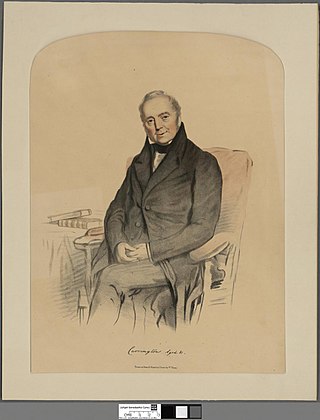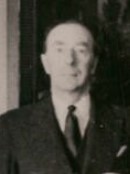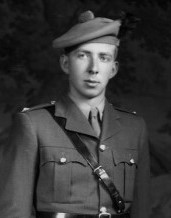
Earl of Sandwich is a noble title in the Peerage of England, held since its creation by the House of Montagu. It is nominally associated with Sandwich, Kent. It was created in 1660 for the prominent naval commander Admiral Sir Edward Montagu. He was made Baron Montagu of St Neots, of St Neots in the County of Huntingdon, and Viscount Hinchingbrooke, at the same time, also in the Peerage of England. The viscountcy is used as the courtesy title by the heir apparent to the earldom. A member of the prominent Montagu family, Lord Sandwich was the son of Sir Sidney Montagu, youngest brother of Henry Montagu, 1st Earl of Manchester, and Edward Montagu, 1st Baron Montagu of Boughton.

Viscount Hailsham, of Hailsham in the County of Sussex, is a title in the Peerage of the United Kingdom. It was created in 1929 for the lawyer and Conservative politician Douglas Hogg, 1st Baron Hailsham, who twice served as Lord High Chancellor of the Great Britain. He had already been created Baron Hailsham, of Hailsham in the County of Sussex, in 1928, also in the Peerage of the United Kingdom. Hogg was the son of the merchant and philanthropist Quintin Hogg, seventh son of Sir James Hogg, 1st Baronet, whose eldest son James McGarel-Hogg, 2nd Baronet was created Baron Magheramorne in the Peerage of the United Kingdom in 1887.

Viscount Hereford is the oldest extant viscountcy in the Peerage of England, making the holder the Premier Viscount of England. The title was created in 1550 for Walter Devereux, 10th Baron Ferrers of Chartley.

Marquess of Cholmondeley is a title in the Peerage of the United Kingdom. It was created in 1815 for George Cholmondeley, 4th Earl of Cholmondeley.

Earl of Malmesbury is a title in the Peerage of Great Britain. It was created in 1800 for the diplomat James Harris, 1st Baron Malmesbury. The son of the grammarian and politician James Harris, he served as Ambassador to Spain, Prussia, Russia and France and also represented Christchurch in the House of Commons. Harris had been created Baron Malmesbury, of Malmesbury in the County of Wiltshire, in 1788. He was made Viscount FitzHarris, of Hurn Court in the County of Southampton, at the same time as he was given the earldom. The earldom and viscountcy were the last creations in the peerage of Great Britain, future titles being made in the peerage of the United Kingdom which took effect three days later.

Earl of the County of Mayo, usually known simply as Earl of Mayo, is a title in the Peerage of Ireland created, in 1785, for John Bourke, 1st Viscount Mayo. For many years he served as "First Commissioner of Revenue" in Ireland. He had already been created Baron Naas, of Naas in the county of Kildare, in 1776, and Viscount Mayo, of Moneycrower in the county of Mayo, in 1781, also in the Peerage of Ireland.

Earl Jellicoe is a title in the Peerage of the United Kingdom. It was created, along with the subsidiary title Viscount Brocas, of Southampton in the County of Southampton, on 29 June 1925 for Admiral of the Fleet John Jellicoe, 1st Viscount Jellicoe, on his return from being Governor-General of New Zealand, with remainder to the heirs male of his body. He had already been created Viscount Jellicoe, of Scapa in the County of Orkney, on 15 January 1918, created with remainder to the heirs male of his body, and in default of such issue to his eldest daughter and the heirs male of her body, with the like remainder in default of such issue to every other daughter successively in order of priority of birth, and to the heirs male of their bodies. The Jellicoe viscountcy was created with remainder to his daughters and their heirs male because, at the time of the creation, Jellicoe had five daughters and no sons. His only son was born three months later.

Viscount Marchwood, of Penang and of Marchwood in the County of Southampton, is a title in the Peerage of the United Kingdom. It was created in 1945 for the businessman and Conservative politician Frederick Penny, 1st Baron Marchwood. He had already been created a baronet, of Marchwood in the county of Southampton, in the Baronetage of the United Kingdom on 19 June 1933, and Baron Marchwood, of Penang and of Marchwood in the County of Southampton, in 1937, also in the peerage of the United Kingdom.

Viscount Tenby, of Bulford in the County of Pembroke, is a hereditary title in the Peerage of the United Kingdom, created in 1957 for former Home Secretary, the Hon. Gwilym Lloyd George, second son of Prime Minister David Lloyd George, 1st Earl Lloyd-George of Dwyfor.

Baron Carrington is a title that has been created three times, once in the Peerage of England, once in the Peerage of Ireland and once in the Peerage of Great Britain.

Baron Castlemaine, of Moydrum in the County of Westmeath, is a title in the Peerage of Ireland. It was created in 1812 for William Handcock, with remainder to his younger brother Richard Handcock. Handcock represented Athlone in Parliament and also served as Governor of County Westmeath. In 1822 he was further honoured when he was made Viscount Castlemaine in the Peerage of Ireland, with remainder to the heirs male of his body.

Baron Ravensdale, of Ravensdale in the County of Derby, is a title in the Peerage of the United Kingdom. It was created in 1911 for the Conservative politician George Curzon, 1st Baron Curzon, of Kedleston, who had previously served as Viceroy of India.

John Hugh Hare, 1st Viscount Blakenham, OBE, PC, DL was a British Conservative politician.
Colwyn Iestyn John Philipps, 3rd Viscount St Davids was a British businessman, Conservative politician and writer on music. Besides his viscountcy, he also held the older titles of Baron Strange of Knockin (1299), Baron Hungerford (1426), and Baron de Moleyns (1445), & the Baronetcy of Picton Castle (1621). He was also a co-heir to the barony of Grey de Ruthyn.

Frederick George Penny, 1st Viscount Marchwood, was a British Conservative Party politician.

Osbert Peake, 1st Viscount Ingleby, PC was a British Conservative Party politician. He served as Minister of National Insurance and then as Minister of Pensions and National Insurance from 1951 to 1955.
Martin Raymond Peake, 2nd Viscount Ingleby was a British hereditary peer and businessman.

John Andrew Davidson, 2nd Viscount Davidson, was a British hereditary peer and Conservative politician. Regarded as a safe pair of hands, he became deputy chief whip in the House of Lords.
Benjamin Ludlow Bathurst, 2nd Viscount Bledisloe, QC, was a British barrister.
David George Staveley Penny, 3rd Viscount Marchwood was a British peer, a Conservative member of the House of Lords from 1979 to 1999.